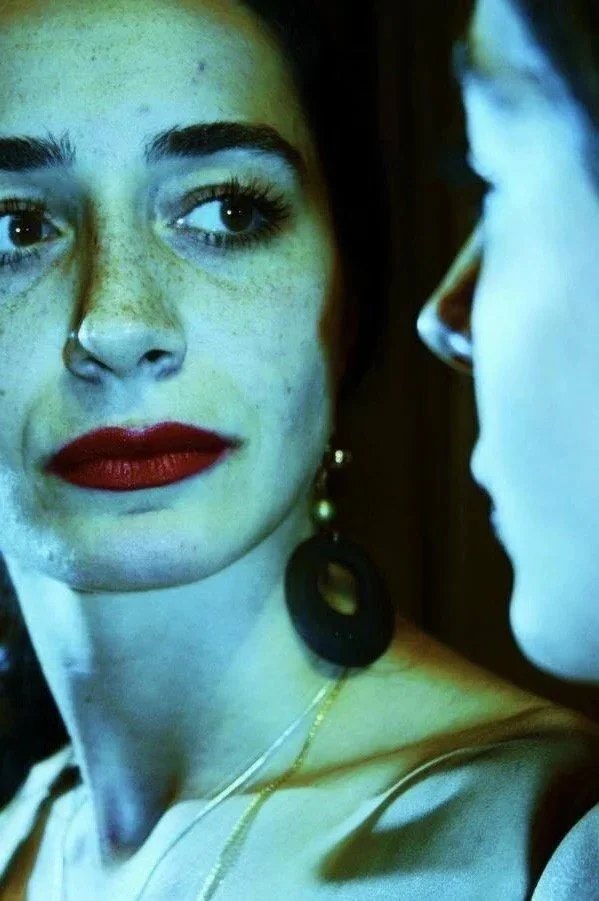Two Works by Marta Machabeli
MARTA MACHABELI IS a Georgian-born painter and photographer living and working in New Haven, Connecticut. She moved to the United States in 2001 and since then has shown in numerous shows in New Haven and around the country.
Marta describes her practice as a visual, spiritual journey. “I don’t paint every day, but I think every day. Painting is the release of the accumulation of these thoughts,” she said. “It was not until taking time to explore hidden philosophy behind the art created by my hand that I found my paintings to leap in time as a prediction of my future. Thus, realizing that, my art is a pure expression of my own transforming ‘Self’ ever-evolving ‘I.’
Machabeli’s work is replete with metaphysical and spiritual symbolism, which is evident not only in the iconography but also in her pallet and color tones. Colors are symbols and serve as sources of spiritual substance.
The works featured below attest to Machabeli’s practice, which is more than the mere materialization of concepts. Her practice strives to evoke the impalpable, manifest the subconscious.
“John of Patmos, Apocalypse 3-1:3” contemplates art as an act of subconscious discovery. The exile of John of Patmos, also known as John the Revelator, provides a lens through which this foray into the depths of the subconscious is mediated. Exile, a departure or removal from the familiar and the cherished, is nothing short of an apocalypse. It is traumatic, a force that violates and risks rupturing the bonds that connect one to history, belonging, and selfhood. Machabeli’s practice registers this violence eloquently but also alerts our eyes to behold in the cracks of displacement and exile the flickering possibilities of new beginnings: the horizon of recreation.
- John of Patmos, Apocalypse 3-1:3, Marta Machabeli
CLASSICALLY TRAINED IN the Soviet-Style in her hometown Tbilisi, exile for Machabeli assumed the narrow constraints of academia. “I suffered in academia and knew that I had to forge my own way, my own language,” she said. In the smothering confines of academia, the Book of Revelation, which inspired this work, offers the possibility of liberation. “The one who has the seven spirits of God and the seven stars says this: ‘I know your works, that you have the reputation of being alive, but you are dead.’” The impulse to retreat inward originates in this text. “Power is nothing but fleeting in the eyes of the universe and the divine, an intoxicating flame that shall one day be extinguished,” she said.
The second work, Divine GO Game, comes to terms with the spiritual implications of human action through the Chinese game of GO.
- Divine GO Game, Marta Machabeli
BY PLACING THE game in the metaphysical realm, human gestures affect beyond the here and now. Like quantum physics, permutations of the game, like transformations in painting, not only carry with them future implications but also reshape the past. “Painting is about time, not only duration but also the moment of creation,” she said. “I paint at night mostly. There is a different energy at the dead of night, possibilities manifest before me. It is an intoxicating feeling. My art has always carried a cryptic message.” She added. “Even mysterious to me. It is through the practice which I begin to understand these messages. As much as I would love to go into the depth of the complexity of this spiritual experience and describe paintings through details, I have to leave it to the observer to get lost of the colors and shapes haunting the canvas and find their way to navigate their imagination.”
This is in the heart of Machabeli’s work: a relentless effort to render cohesive personal mythology while acknowledging the total accessibility to spiritual realms is never possible. The viewing experience, in this case, is journeying through this ineffable space. ◇
Self-Portrait, Marta Machabeli
To see more of Marta Machabeli’s work, visit her website, https://www.martamachabeli.com/



